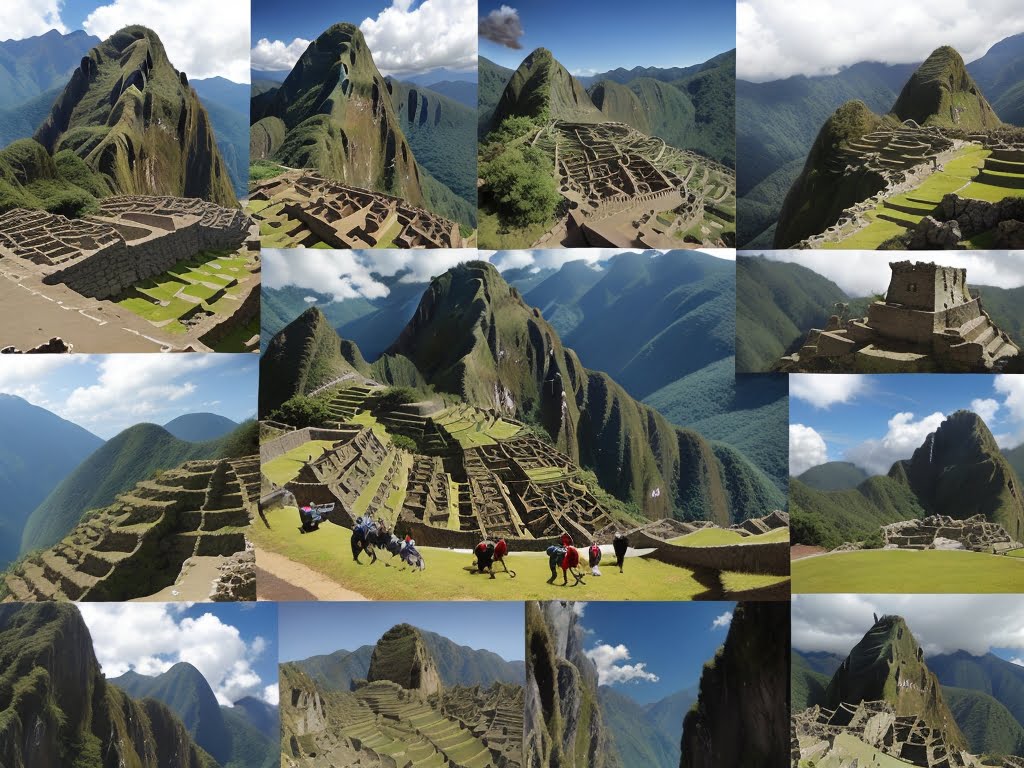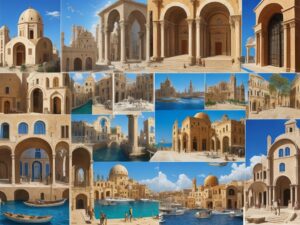Join us on an incredible journey as we explore the wonders of 3 UNESCO World Heritage Sites. Get ready to discover the awe-inspiring beauty of Machu Picchu, the enchanting biodiversity of the Galápagos Islands, and the rich cultural history of Oaxaca’s Historic Center. These three extraordinary destinations are not only easily accessible from various ports but also hold a significant place in world history and conservation. From ancient ruins to pristine natural landscapes, immerse yourself in the captivating stories and experiences that await you. Let’s embark on this unforgettable adventure together!
Table of Contents
Toggle3 UNESCO World Heritage Sites
Machu Picchu
1. Introduction to Machu Picchu
Welcome to the magnificent world of Machu Picchu! Nestled high in the Andes Mountains of Peru, this UNESCO World Heritage Site is a true testament to human ingenuity and architectural brilliance. Known as the “Lost City of the Incas,” Machu Picchu is a mystical and enchanting place that continues to captivate the hearts and minds of all who visit.
2. History and significance
Machu Picchu holds immense historical and cultural significance. It was built around the 15th century by the Inca Empire and served as a sacred retreat for the Inca rulers. However, the city was deserted and forgotten for centuries until its rediscovery in 1911 by the American explorer Hiram Bingham. This incredible archaeological site provides a window into the ancient Inca civilization, showcasing their advanced engineering skills and architectural mastery.
3. The architecture of Machu Picchu
The architecture of Machu Picchu is truly awe-inspiring. The city is divided into two main areas: the agricultural and urban sectors. The agricultural sector consists of terraced fields, where the Incas cultivated crops to sustain the population. The urban sector, on the other hand, is made up of impressive stone buildings, including temples, residences, and plazas. The precision with which these stones were carved and fitted together without the use of mortar is a remarkable feat that still baffles archaeologists today.
4. How to reach Machu Picchu
Reaching Machu Picchu is an adventure in itself. The most popular way to get there is by taking the classic Inca Trail hike, a four-day trek that offers breathtaking views and a chance to follow in the footsteps of the ancient Incas. For those seeking a less strenuous option, the train is an excellent choice. The scenic train ride departs from Cusco and takes you through the stunning Sacred Valley before arriving at Aguas Calientes, the gateway town to Machu Picchu. From there, a short bus ride will take you up the winding mountain road to the entrance of the site.
5. Exploring the site
Once you enter Machu Picchu, prepare to be transported to another time and place. As you wander through the intricate maze of stone structures, it’s easy to imagine the vibrant life that once thrived within these walls. Highlights not to be missed include the Temple of the Sun, the Intihuatana Stone, and the awe-inspiring views from the Sun Gate or the Inca Bridge. It is recommended to hire a local guide who can provide valuable insights and stories about the site, enhancing your overall experience.
6. Tips for visiting Machu Picchu
To make the most of your visit to Machu Picchu, here are a few tips to keep in mind. Firstly, it is advisable to book your tickets in advance, as only a limited number of visitors are allowed each day to preserve the site. Secondly, it’s important to acclimatize to the high altitude of the region before ascending to Machu Picchu. Spending a few days in Cusco or the Sacred Valley before your visit will help you adjust. Lastly, don’t forget to bring comfortable walking shoes, a hat, sunscreen, and plenty of water to stay hydrated during your exploration of this ancient wonder.
Galápagos Islands
1. Introduction to the Galápagos Islands
Welcome to the mesmerizing Galápagos Islands, an archipelago in the Pacific Ocean off the coast of Ecuador. These remote and pristine islands are renowned for their unique biodiversity and served as the inspiration for Charles Darwin’s theory of evolution. As a UNESCO World Heritage Site, the Galápagos Islands offer visitors the opportunity to witness rare and extraordinary flora and fauna found nowhere else on Earth.
2. Unique flora and fauna
The Galápagos Islands are often referred to as a living laboratory due to their extraordinary array of plant and animal species. From gigantic Galápagos tortoises and marine iguanas to magnificent blue-footed boobies and waved albatrosses, the islands are a paradise for wildlife enthusiasts. The marine life is equally remarkable, with opportunities for snorkeling or diving to encounter playful sea lions, colorful fish, and even the elusive hammerhead sharks. The ecosystems of the Galápagos Islands are truly a testament to the wonders of nature.
3. Charles Darwin and the Galápagos Islands
No introduction to the Galápagos Islands would be complete without mentioning Charles Darwin. During his famous voyage aboard the HMS Beagle in 1835, Darwin visited the islands and was struck by their unique flora and fauna. His observations and subsequent studies of the islands’ wildlife form the foundation of his groundbreaking theory of natural selection and evolution. Today, visitors can retrace Darwin’s steps and witness firsthand the species that inspired his revolutionary ideas.
4. Popular islands to visit
With over 19 major islands and countless smaller islets, choosing which islands to visit in the Galápagos can be a daunting task. However, some islands are particularly renowned for their wildlife and geological wonders. Santa Cruz Island, the most populous in the archipelago, offers a chance to see the iconic giant tortoises in their natural habitat. Isabela Island, the largest of the Galápagos, is home to diverse volcanic landscapes and penguins. Floreana Island boasts pristine beaches and is steeped in intriguing human history, including the famous Post Office Bay. Whichever islands you choose, you are guaranteed an unforgettable experience.
5. Activities and experiences
The Galápagos Islands offer a multitude of activities and experiences for every type of traveler. Snorkeling and diving enthusiasts can explore the vibrant underwater world teeming with marine life, while hikers can embark on guided treks to witness the islands’ unique landscapes. Kayaking, paddleboarding, and cruising are also popular ways to explore the archipelago’s pristine waters. Wildlife lovers will revel in the opportunity to observe animals up close and personal, while photography enthusiasts can capture once-in-a-lifetime moments of the islands’ breathtaking beauty.
6. Regulations and conservation efforts
Preserving the fragile ecosystems of the Galápagos Islands is of paramount importance. Visitors are required to follow strict regulations to minimize their impact on the environment. These regulations include staying on designated trails, not disturbing the wildlife, and taking all precautions to prevent the introduction of invasive species. Traveling with a responsible tour operator that adheres to sustainable practices ensures that your visit supports the conservation efforts that are crucial for the long-term survival of the Galápagos Islands.
Oaxaca’s Historic Center
1. Introduction to Oaxaca’s Historic Center
Welcome to the enchanting Historic Center of Oaxaca! Located in southern Mexico, Oaxaca City’s Historic Center is a UNESCO World Heritage Site that offers a captivating blend of rich cultural heritage, stunning architecture, and vibrant traditions. Immerse yourself in the colonial charm of its cobblestone streets, vibrant markets, and captivating museums as you explore this captivating destination.
2. Cultural significance and UNESCO status
Oaxaca’s Historic Center is steeped in cultural significance and history. The city was founded in 1529 and served as a major hub of Spanish colonial influence in the region. Its architectural beauty reflects a fusion of indigenous and European styles, creating a unique aesthetic that is truly captivating. UNESCO recognized the historical and cultural importance of Oaxaca’s Historic Center and granted it World Heritage status in 1987, ensuring its preservation for future generations.
3. Highlights of the Historic Center
The Historic Center of Oaxaca is home to numerous architectural treasures and cultural landmarks. Historic buildings like the Santo Domingo Church, with its ornate baroque facade and breathtaking interior, offer glimpses into Oaxaca’s colonial past. The beautiful Oaxaca Cathedral, with its imposing facade and stunning interior, is another must-visit attraction. The vibrant Zocalo, or main square, is the heart of the city and a hub of activity, surrounded by shops, cafes, and restaurants.
4. Local cuisine and markets
Oaxaca is famous for its rich culinary tradition, and the Historic Center is the perfect place to sample the local delicacies. From savory mole sauces to tlayudas (large tortillas topped with various ingredients), the city’s food scene is a feast for the senses. Don’t miss the opportunity to explore the bustling markets, such as the Mercado Benito Juarez or the Mercado 20 de Noviembre, where you can taste traditional dishes, buy local handicrafts, and immerse yourself in the vibrant atmosphere.
5. Celebrations and festivals
Oaxaca is known for its vibrant celebrations and festivals, and the Historic Center is at the center of the action. Throughout the year, the city comes alive with colorful processions, traditional dances, and religious ceremonies. One of the most famous festivals is the Day of the Dead, a unique and deeply spiritual celebration that honors departed loved ones. Witnessing the elaborate altars and intricately crafted sugar skulls that adorn the streets during this time is a truly unforgettable experience.
6. Art and crafts in Oaxaca
Oaxaca has long been revered for its traditional art and crafts. The Historic Center is home to numerous workshops and galleries where you can appreciate and purchase exquisite handcrafted items. From vibrant textiles and intricately carved alebrijes (colorful wooden folk art sculptures) to beautiful pottery and traditional mezcal, the city offers a wealth of artistic treasures. Exploring the art scene in the Historic Center allows you to support local artisans and bring a piece of Oaxaca’s cultural heritage home with you.
In conclusion, Machu Picchu, the Galápagos Islands, and Oaxaca’s Historic Center are all UNESCO World Heritage Sites that offer unique and unforgettable experiences. Whether you’re captivated by the ancient ruins and mystical aura of Machu Picchu, intrigued by the extraordinary biodiversity of the Galápagos Islands, or enchanted by the colonial charm and vibrant traditions of Oaxaca’s Historic Center, each destination promises to leave a lasting impression. Explore these magnificent UNESCO sites and embark on a journey of discovery and wonder.





